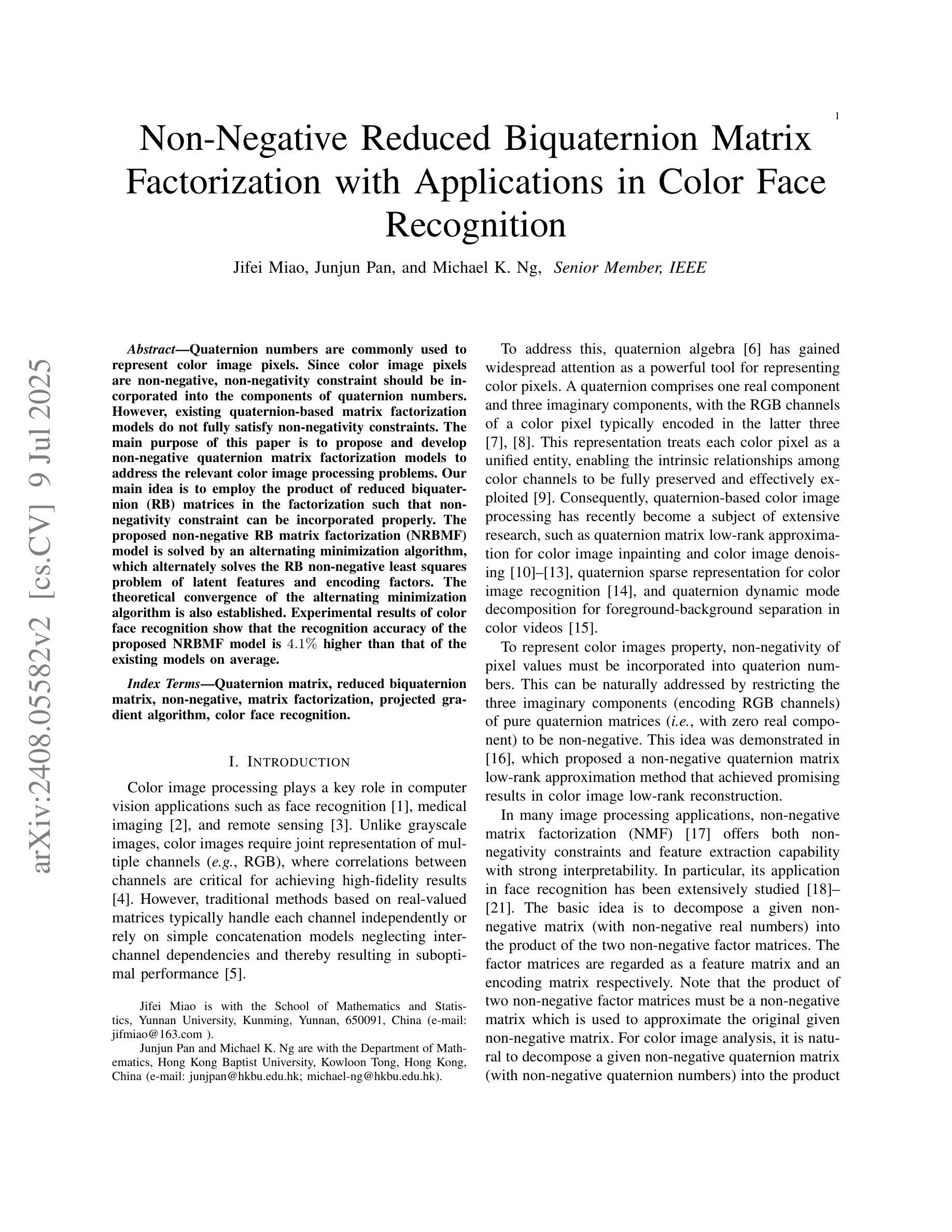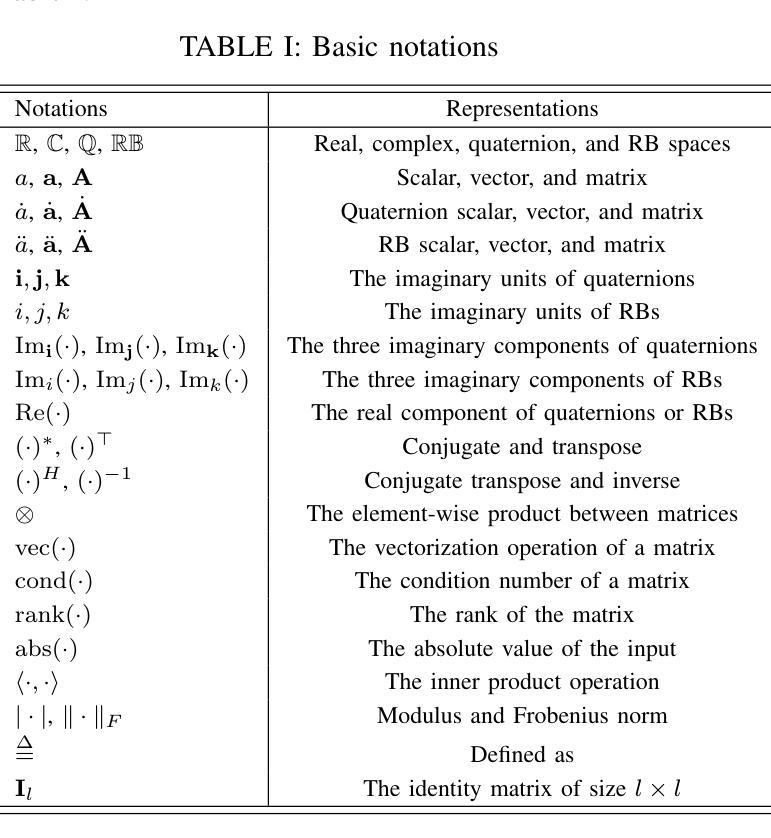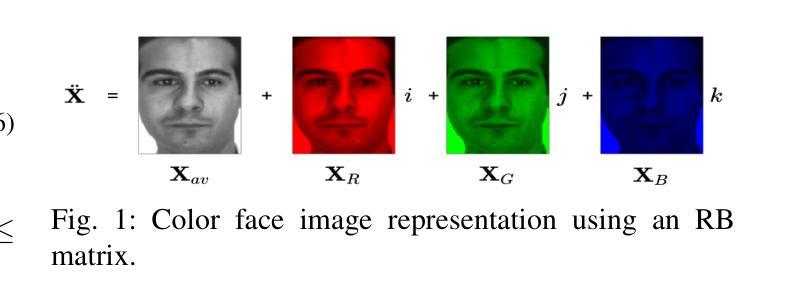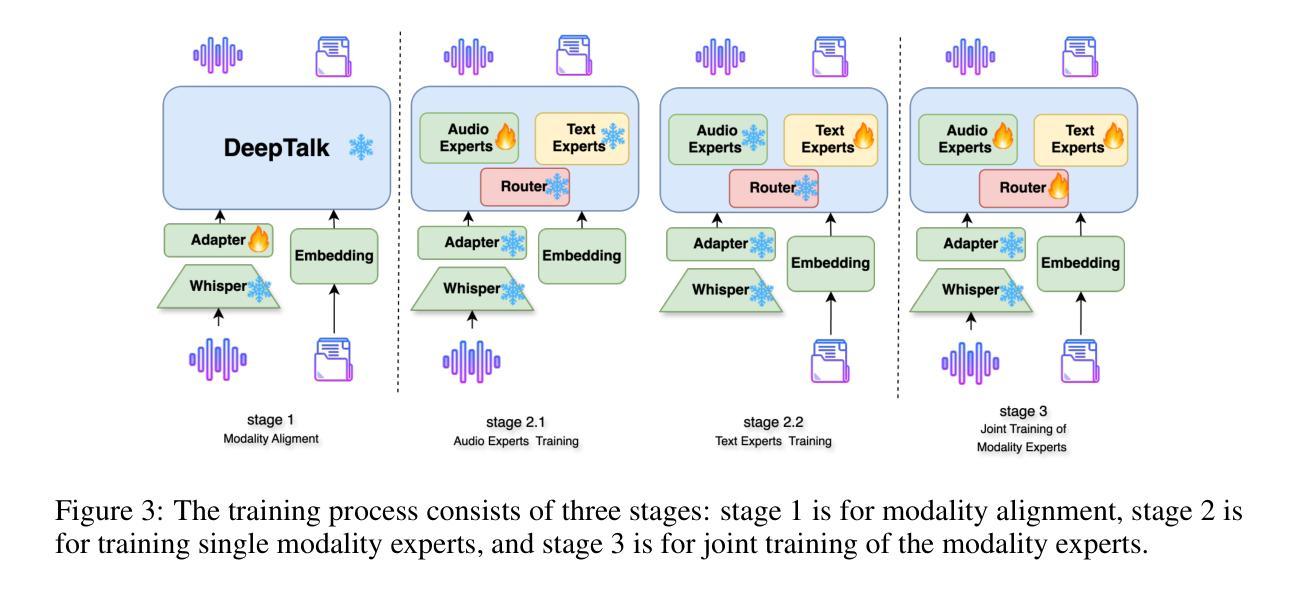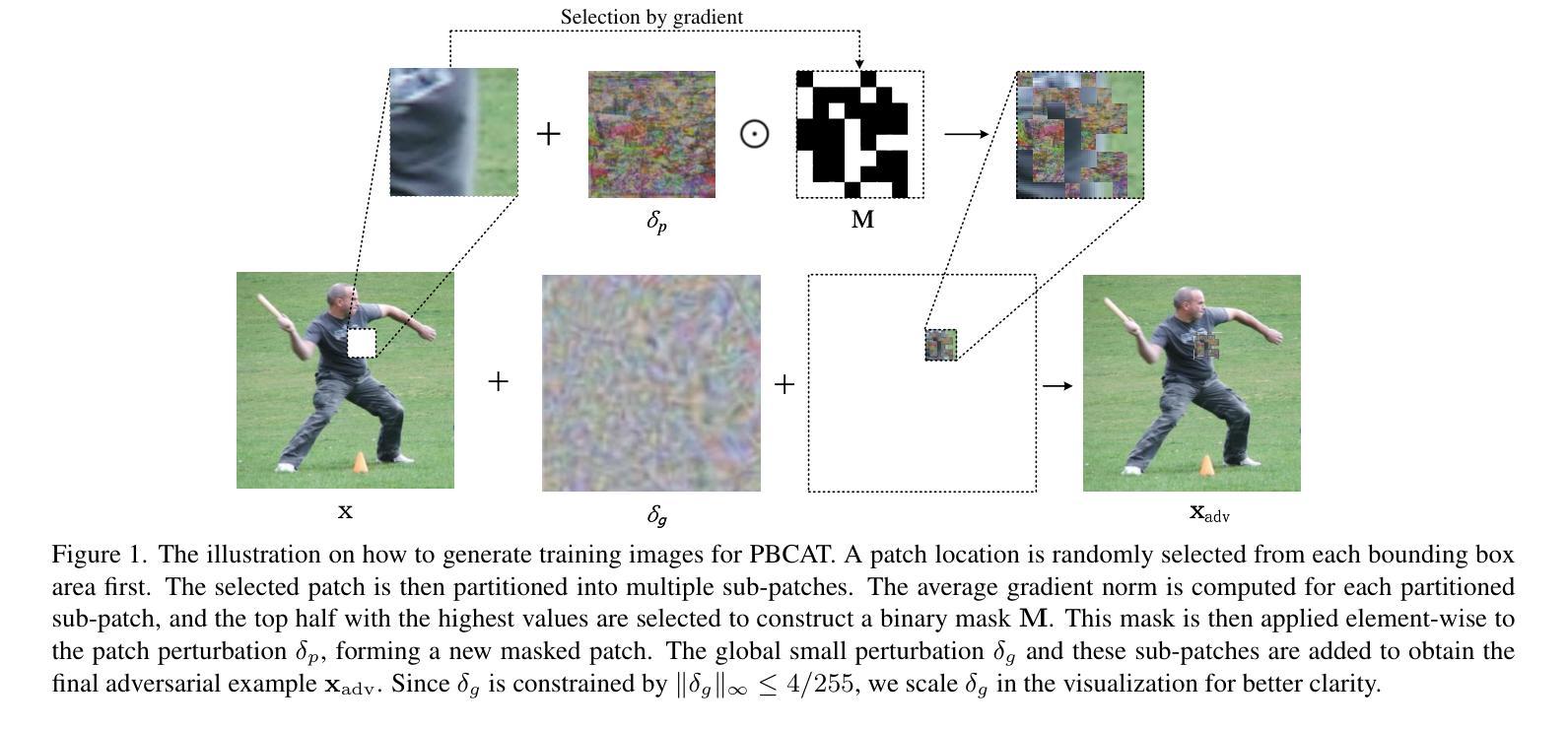⚠️ 以下所有内容总结都来自于 大语言模型的能力,如有错误,仅供参考,谨慎使用
🔴 请注意:千万不要用于严肃的学术场景,只能用于论文阅读前的初筛!
💗 如果您觉得我们的项目对您有帮助 ChatPaperFree ,还请您给我们一些鼓励!⭐️ HuggingFace免费体验
2025-07-11 更新
DArFace: Deformation Aware Robustness for Low Quality Face Recognition
Authors:Sadaf Gulshad, Abdullah Aldahlawi Thakaa
Facial recognition systems have achieved remarkable success by leveraging deep neural networks, advanced loss functions, and large-scale datasets. However, their performance often deteriorates in real-world scenarios involving low-quality facial images. Such degradations, common in surveillance footage or standoff imaging include low resolution, motion blur, and various distortions, resulting in a substantial domain gap from the high-quality data typically used during training. While existing approaches attempt to address robustness by modifying network architectures or modeling global spatial transformations, they frequently overlook local, non-rigid deformations that are inherently present in real-world settings. In this work, we introduce DArFace, a Deformation-Aware robust Face recognition framework that enhances robustness to such degradations without requiring paired high- and low-quality training samples. Our method adversarially integrates both global transformations (e.g., rotation, translation) and local elastic deformations during training to simulate realistic low-quality conditions. Moreover, we introduce a contrastive objective to enforce identity consistency across different deformed views. Extensive evaluations on low-quality benchmarks including TinyFace, IJB-B, and IJB-C demonstrate that DArFace surpasses state-of-the-art methods, with significant gains attributed to the inclusion of local deformation modeling.The code is available at the following https://github.com/sadafgulshad1/DArFace
人脸识别系统通过利用深度神经网络、先进的损失函数和大规模数据集取得了显著的成功。然而,在涉及低质量面部图像的现实场景应用中,它们的性能往往会下降。这种退化在监控录像或远距离成像中很常见,包括低分辨率、运动模糊和各种失真,与训练期间通常使用的高质量数据之间存在很大的领域差距。虽然现有的方法试图通过修改网络架构或建模全局空间变换来提高稳健性,但它们经常忽略现实环境中固有的局部非刚性变形。在这项工作中,我们介绍了DArFace,一个变形感知稳健人脸识别框架,它提高了对这种退化的稳健性,而无需配对高质量和低质量训练样本。我们的方法通过模拟现实低质量条件,在训练过程中对抗性地结合了全局变换(例如旋转、平移)和局部弹性变形。此外,我们引入了一个对比目标,以强制执行不同变形视图之间的身份一致性。在低质量基准测试上的广泛评估,包括TinyFace、IJB-B和IJB-C,证明DArFace超越了最先进的方法,其显著收益归因于局部变形建模的包含。代码可在以下网址找到:DArFace的GitHub仓库链接。
论文及项目相关链接
Summary
人脸识别技术在现实场景如监控视频或远距离成像中的低质量面部图像中常遭遇性能下降问题。本文提出的DArFace框架旨在增强系统对变形的鲁棒性,无需配对高低质量训练样本。通过模拟真实低质量条件,结合全局变换和局部弹性变形进行训练,并引入对比目标以加强不同变形视图之间的身份一致性。在多个低质量基准测试上的评估显示,DArFace超越现有方法,局部变形建模的引入是性能提升的关键。
Key Takeaways
- 面部识别系统在实际应用中面临低质量面部图像的挑战,如分辨率低、运动模糊和各种失真。
- DArFace框架旨在解决这些问题,增强系统对变形和低质量图像的鲁棒性。
- DArFace通过模拟真实低质量条件,结合全局和局部变形进行训练。
- 引入对比目标以加强不同变形视图之间的身份一致性。
- 在多个基准测试上的评估显示,DArFace的性能超越了现有方法。
- 显著的提升得益于局部变形建模的引入。
点此查看论文截图
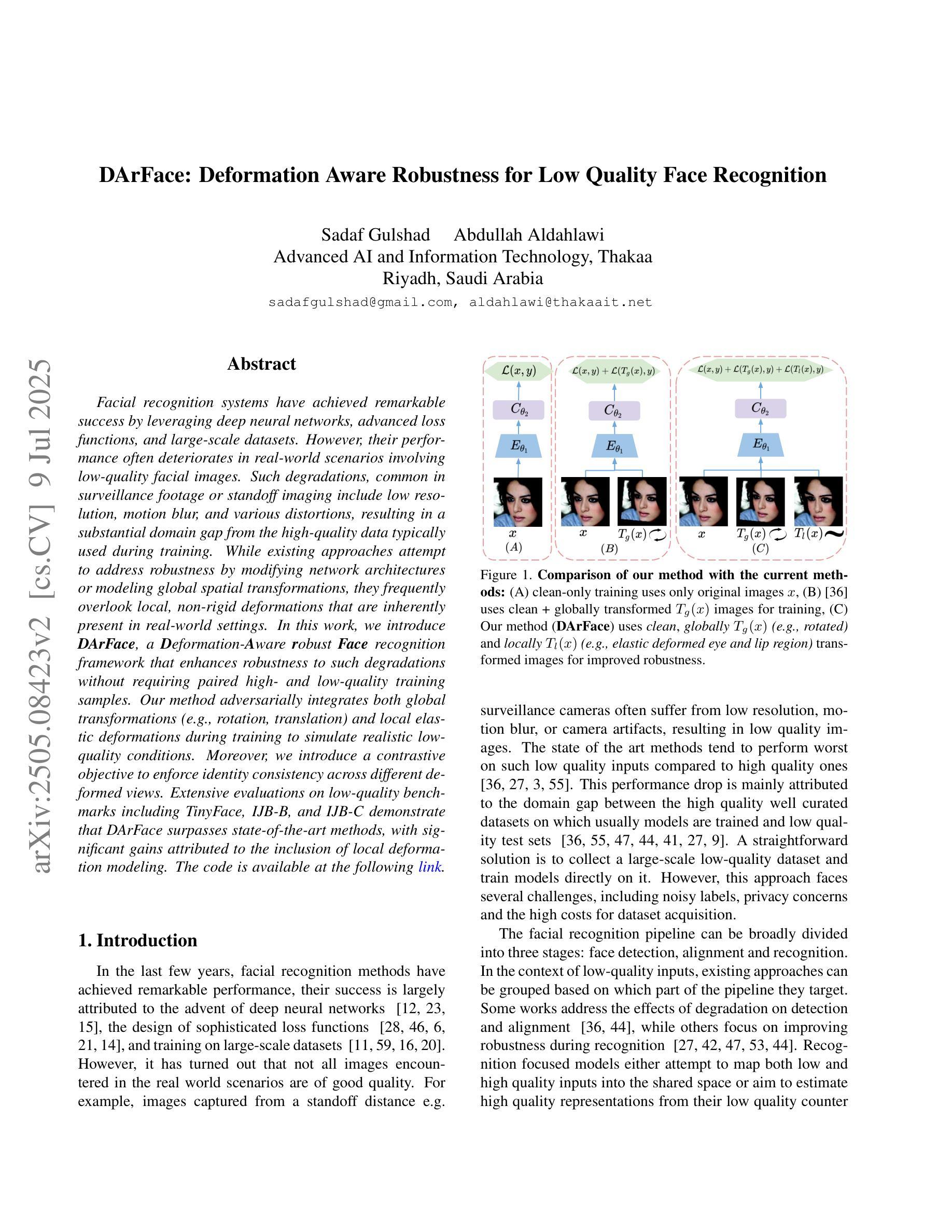
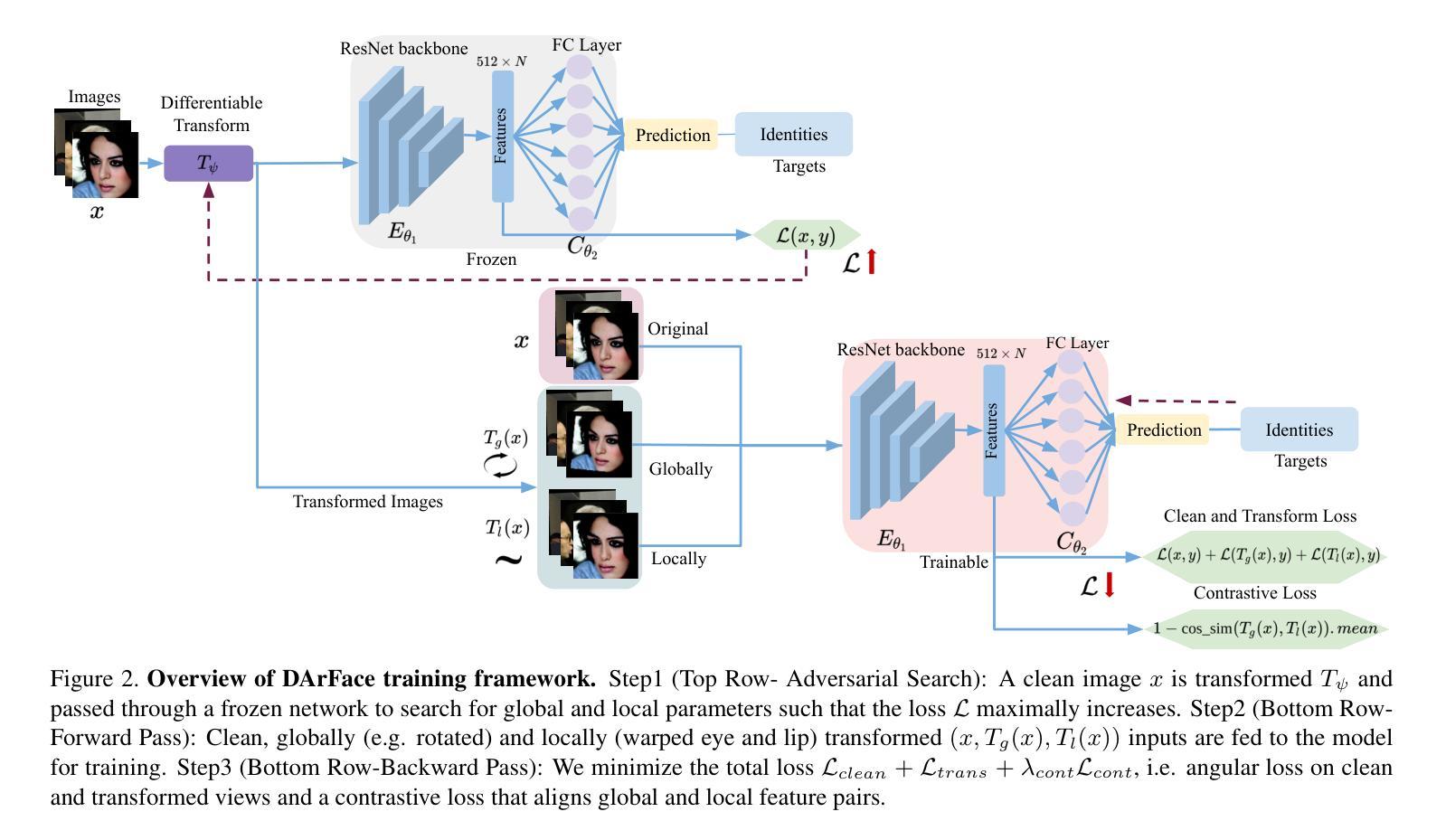
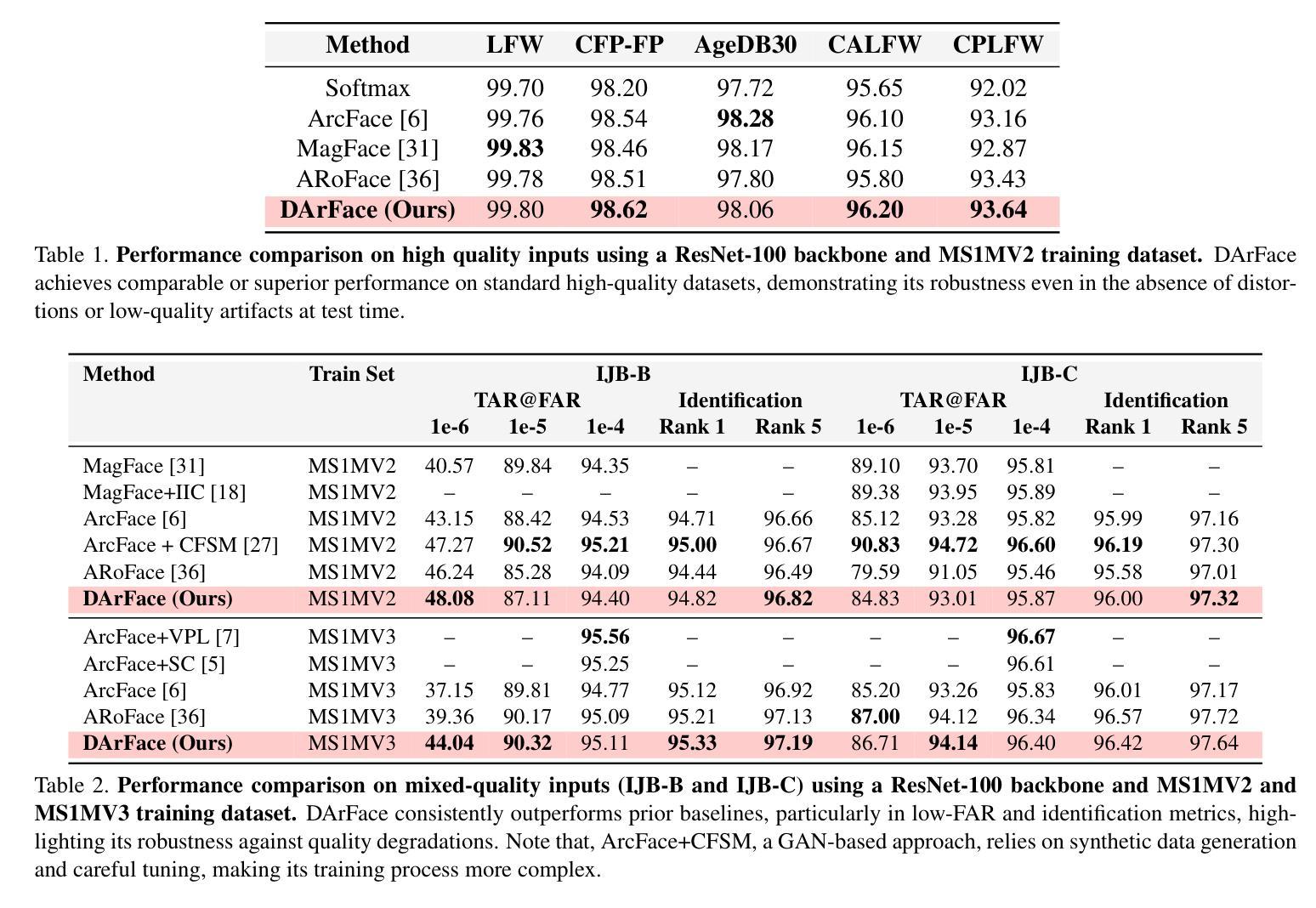
Non-Negative Reduced Biquaternion Matrix Factorization with Applications in Color Face Recognition
Authors:Jifei Miao, Junjun Pan, Michael K. Ng
Reduced biquaternion (RB), as a four-dimensional algebra highly suitable for representing color pixels, has recently garnered significant attention from numerous scholars. In this paper, for color image processing problems, we introduce a concept of the non-negative RB matrix and then use the multiplication properties of RB to propose a non-negative RB matrix factorization (NRBMF) model. The NRBMF model is introduced to address the challenge of reasonably establishing a non-negative quaternion matrix factorization model, which is primarily hindered by the multiplication properties of traditional quaternions. Furthermore, this paper transforms the problem of solving the NRBMF model into an RB alternating non-negative least squares (RB-ANNLS) problem. Then, by introducing a method to compute the gradient of the real function with RB matrix variables, we solve the RB-ANNLS optimization problem using the RB projected gradient algorithm and conduct a convergence analysis of the algorithm. Finally, we validate the effectiveness and superiority of the proposed NRBMF model in color face recognition.
作为一种非常适合表示彩色像素的四维代数,缩减四元数(Reduced Biquaternion,简称RB)最近引起了众多学者的关注。针对彩色图像处理问题,本文引入了一种非负RB矩阵的概念,并利用RB的乘法特性,提出了一种非负RB矩阵分解(NRBMF)模型。NRBMF模型的引入是为了解决建立合理的非负四元矩阵分解模型的挑战,这一挑战主要由传统四元数的乘法特性所阻碍。此外,本文将解决NRBMF模型的问题转化为一个RB交替非负最小二乘(RB-ANNLS)问题。然后,通过引入一种计算实函数关于RB矩阵变量梯度的方法,我们利用RB投影梯度算法解决了RB-ANNLS优化问题,并对该算法进行了收敛性分析。最后,我们通过彩色人脸识别验证了所提NRBMF模型的有效性和优越性。
论文及项目相关链接
Summary
这篇论文针对颜色图像处理问题,引入了非负减化双四元数矩阵的概念,并提出了一种非负减化双四元数矩阵分解模型(NRBMF)。该模型解决了建立非负四元数矩阵分解模型的难题,主要得益于减化双四元数的乘法特性。论文将求解NRBMF模型的问题转化为一个减化双四元数交替非负最小二乘(RB-ANNLS)问题,通过计算实函数在减化双四元数矩阵变量上的梯度,使用减化双四元数投影梯度算法解决RB-ANNLS优化问题,并对算法的收敛性进行了分析。最后,通过颜色人脸识别验证了NRBMF模型的有效性和优越性。
Key Takeaways
- 引入非负减化双四元数矩阵概念,适用于颜色图像处理。
- 提出非负减化双四元数矩阵分解(NRBMF)模型,解决建立非负四元数矩阵分解模型的难题。
- 将求解NRBMF模型的问题转化为减化双四元数交替非负最小二乘(RB-ANNLS)问题。
- 利用减化双四元数的乘法特性解决传统四元数乘法带来的困难。
- 通过计算实函数在减化双四元数矩阵变量上的梯度,使用投影梯度算法解决RB-ANNLS优化问题。
- 对算法的收敛性进行分析。
点此查看论文截图
